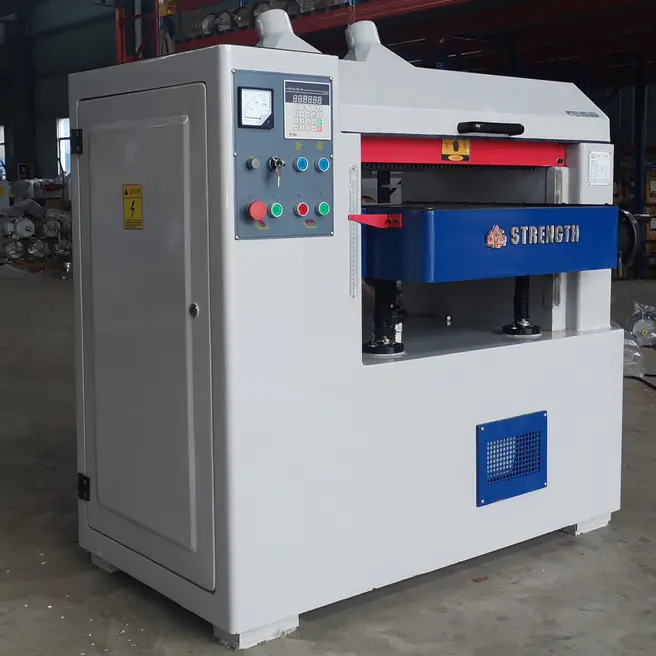Which planer or thicknesser to choose?
Introduction to Planers and Thicknessers
Key Differences Between Planers and Thicknessers
Factors to Consider When Choosing a Planer or Thicknesser
Popular Brands and Models
Maintenance and Safety Tips
Conclusion
一、Introduction to Planers and Thicknessers
Wood planers and thickness planers are essential tools in woodworking, designed to create smooth, flat surfaces and consistent thicknesses on wooden boards。A wood planer, also known as a thickness planer, is used to trim boards to a consistent thickness throughout their length。It shaves off small layers of wood from the surface, ensuring that both sides of the board are parallel and smooth。A thickness planer, often referred to as a thicknesser, is specifically designed to achieve uniform thickness across the entire length of a board。
二、Key Differences Between Planers and Thicknessers
While both tools are used to process wood, they serve different purposes。A planer is primarily used to create a second surface parallel to the first, bringing boards to a specific thickness。It cannot guarantee a flat surface on any side。On the other hand, a thickness planer is designed to produce a flat, square, and thickness-specific board。It is often used to create a first flat surface and may be able to do so in a single pass。However, the thicknesser has more important advantages in that it can produce a board with a consistent thickness, avoids producing a tapered board, and by making passes on each side and turning the board, may also be used for the initial preparation of an unplaned board。
三、Factors to Consider When Choosing a Planer or Thicknesser
When choosing between a planer and a thickness planer, several factors should be considered:
Project Requirements:Consider the specific needs of your woodworking projects. If you need to create a first flat surface, a jointer or a planer with jointing capabilities might be more suitable。For achieving consistent thickness and smooth surfaces, a thickness planer is the better choice。
Size and Capacity:Determine the size and capacity of the machine based on the dimensions of the wood you will be working with。Larger boards require a planer or thicknesser with a wider cutting width and higher capacity。
Power and Performance:Check the motor power and cutting head speed to ensure the machine can handle the materials and thicknesses you plan to work with。
Features and Accessories:Look for additional features such as dust collection systems, adjustable guides, and infeed/outfeed tables that can enhance the performance and safety of the machine。
Brand and Reviews:Research popular brands and read reviews to get an idea of the reliability, durability, and performance of different models。
四、Popular Brands and Models
Several brands are known for their high-quality planers and thicknessers:
DEWALT:The DEWALT DW735 Planer is highly praised for its robust build quality, powerful 15-amp motor, and three-knife cutterhead。It can handle boards up to 13 inches wide and 6 inches thick, with a maximum planing depth of ⅛ inch。
Makita:The Makita 2012NB thickness planer is a popular choice for woodworking projects。It is known for its excellent build quality, powerful 1650W motor, and quiet operation (83dB)。
Bosch:Bosch thickness planers are known for their multifunctionality and efficiency。They offer wired, 18V, and 12V Max options, suitable for various woodworking tasks。
Jet:Jet 20 Helical Planer (208HH) and Jet 13-Inch Benchtop Planer (JWP-13BT) are well-received for their performance and features。The 20HH model is praised for its helical cutterhead, reducing tearout and snipe。
五、Maintenance and Safety Tips
Proper maintenance and safety practices are crucial when using planers and thicknessers:
Maintenance:Regularly clean the cutterhead, rollers, and table surface to ensure optimal performance。Sharpen or replace blades when they become dull to prevent tearing wood。Lubricate guide posts and head elevation screws with dry paraffin wax。
Safety:Always wear safety gear such as hearing protection and goggles when operating these machines。Ensure that the wood is properly secured and fed into the machine at the correct speed。Follow all manufacturer guidelines and safety precautions。
六、Conclusion
Choosing the right planer or thicknesser depends on your specific woodworking needs, project requirements, and budget。Both tools offer unique benefits and are essential for achieving professional-quality results。By considering factors such as size, capacity, power, features, and brand reputation, you can make an informed decision that will enhance your woodworking capabilities and ensure efficient and safe operation
Post time: Aug-13-2025

